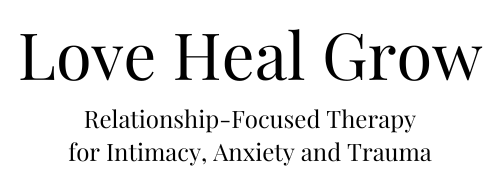
Polyvagal Theory describes the impact that our nervous system has on our experience of threat and safety. Changes in our autonomic nervous system (which regulates involuntary physiological processes like breathing, heart rate, digestion, etc.) produce key states of being: rest-and-digest (safe and relaxed), fight-or-flight (unsafe and mobilized), or shutdown (unsafe and frozen).
If you have unresolved trauma in your past, experience anxiety and depression, or struggle with chronic stress, your nervous systems may struggle to exit fight-or-flight or shutdown mode. This is taxing on your body and can lead to many adverse health outcomes, both physical and mental.
The vagus nerve is heavily involved in the parasympathetic nervous system (a division of the autonomic nervous system) which helps your body exit its fight-or-flight mode; when the parasympathetic nervous system is activated, you feel calm and serene, as your body enters rest-and-digest mode. This nerve extends from your brain to your most vital internal organs.
Here are some ways that you can stimulate the vagus nerve:
Breathe
Changing your breathing is a powerful tool and one of the quickest ways to change your emotional state. Taking deep, slow breaths from the belly can provide biofeedback that stimulates the vagus nerve, effectively promoting a sense of calm. Breathe slowly through your nose while counting to 4, hold the breath for 4 seconds, and slowly exhale through the mouth for 5 seconds. Repeat until you feel more at peace.
Yoga
Yoga is a powerful way to stimulate the vagus nerve. It utilizes stretching, breathing, posture changes, mindfulness, and relaxation, all activities that have been researched to be beneficial for the mind and body. Further, yoga has been studied to increase GABA (the neurotransmitter responsible for a calming effect on the nervous system).
Utilize Your Voice
We can use our vocal chords to stimulate the vagus nerve. In the “Voo Breathing Method,” you exhale very slowly while creating a “voo” sound from the back of your throat. The vibrating sound on the outbreath stimulates the vagus nerve. Another way to utilize your voice is by singing. Jam out to your favorite song in the car, at karaoke with friends, or hum your favorite melody.
Massage
Massaging certain points on the body can stimulate the vagus nerve. For example, one of the easiest access points is through the belly button. There are many easy guided vagus nerve massages available on the internet.
Seek Therapeutic Help.
Though the aforementioned coping skills can be incredibly effective, it is also important to address what is prompting your nervous system’s alarm bells in the first place. Therapists can provide empathy and compassion while helping you work through the root of the issue, whether that be key experiences in childhood, traumatic events, chronic stress, depression, anxiety, or other challenges that may show up for you. For help with this, more tips, and attentive support, please don’t hesitate to reach out to us at Love Heal Grow.

Hi, I’m Ashley Barnes, therapist for individuals and couples at Love Heal Grow Counseling.
I help individuals and couples who seek to improve and enhance their relationships, those who wish to heal from painful experiences and navigate big life changes, and those who aspire to improve their mental well being.
You can read more about me or schedule an appointment here: About Ashley
























